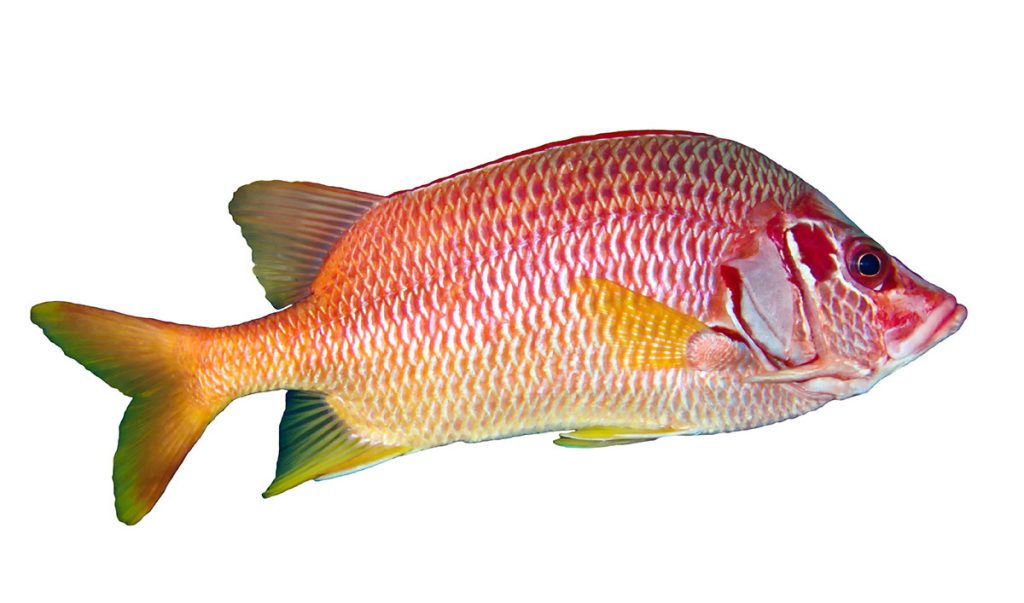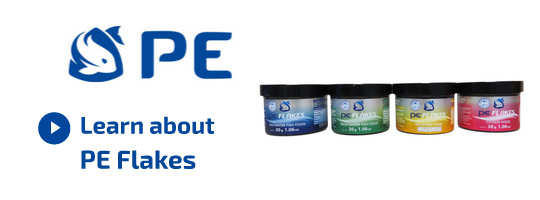Squirrelfish Species
Squirrelfish
Squirrelfish and Soldierfish are members of the Holocentridae family. The Soldierfishes are placed in the Myripristinae subfamily, whereas the Squirrelfish can be found in the Holocentrinae subfamily. Squirrelfishes are often kept in marine aquariums due to their relative ease of care, deep red colors, and fascinating big eyes.
The Blackbar Soldfierfish (Myripristis jacobus) is one of the most commonly available members of the Holocentridae family. Other frequently seen species in the trade include the Sammara Squirrelfish (Neoniphon sammara), Glasseye Squirrelfish (Heteropriacanthus cruentatus) and the Popeye Soldierfish (Pristigenys serrula).
Biology
Squirrelfish and Soldierfish are found in the tropical Indian, Pacific and Atlantic oceans. They can range in size from 3” (8 cm) to 15” (35 cm).
Squirrelfish and Soldierfish are typically nocturnal, spending their days hidden amongst rock crevices and caves. They are active at night where they hunt for foods such as crustaceans and forage for zooplankton like mysis.
Captive Care
Squirrelfish and Soldierfish can make great aquarium inhabitants, provided their husbandry needs such as diet, water quality and tank space are met. These fish are generally found in caves, under overhangs or more dimly lit conditions. It is advisable to recreate this environment in captivity through ample rockwork, and avoid overly bright lighting, particularly during acclimation to captivity.
Most squirrelfish prefer a temperature range of 72F (22C) to 80F (26C). Squirrelfish and Soldierfish are generally considered reef safe, with caution. While they will not harm corals, they will consume small fishes and small ornamental shrimps.
It is important to consider carefully what species of Squirrelfish or Soldierfish may be best for your aquarium. While smaller species such as the Striped Squirrelfish (Sargocentron xantherythrum) are suited to tanks as small as 70 gallons, larger species such as the Glasseye Squirrelfish (Heteropriacanthus cruentatus) may be better suited to a larger tank.
Suggested Piscine Energetics Products
We suggest a diet based on Piscine Energetics Frozen Mysis, Piscine Energetics Frozen Calanus, Piscine Energetics Pellets (1mm, 2mm and 3mm) and Piscine Energetics Saltwater Flakes.
What people are saying about PE:
After feeding my seahorses your mysis for about 3 months; they are fat and happy!!! they give me baby seahorses (at least 300 ) each 14 days... So I'm very satisfied of your mysis.The frozen mysis is about 70 per cent of their diet.
Yvan Charbonneau Quebec
I am keeping these Indian mudskippers -- very cute -- about 3-4 inches long. I've been feeding them frozen bloodworm, and decided to try them on mysis. I feed them in a "shallows" in the 150 I have set up for them. The minute the mysis hit the water they were on it, frozen and all. They gorged until their little bellies were almost bursting. I have yet to see an aquatic creature that does not go absolutely nuts over PE Mysis.
David Lass Massachusetts
I picked up my Mysis today and they arrived wonderfully. All the fish I fed them to, absolutely devoured them. They are my Frontosas new favorite food. All my Discus ate them up eagerly...heads and all!! I want to thank you again for your excellent service and product.
Pierre Brenton Nova Scotia
I have a large saltwater aquarium (220 gallons) with very expensive fishes and invertebrates. I tried to feed them with your PE Mysis and they really went crazy about it. Since that time, some of my fishes refuse any other product I offer them!






